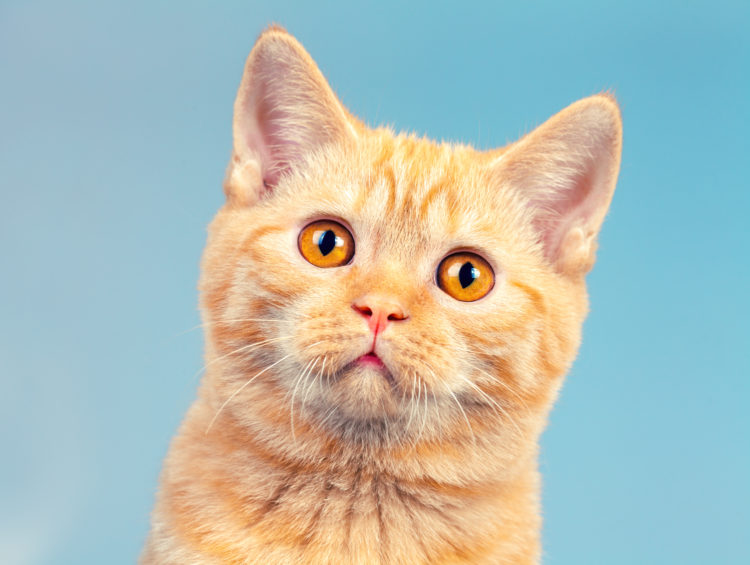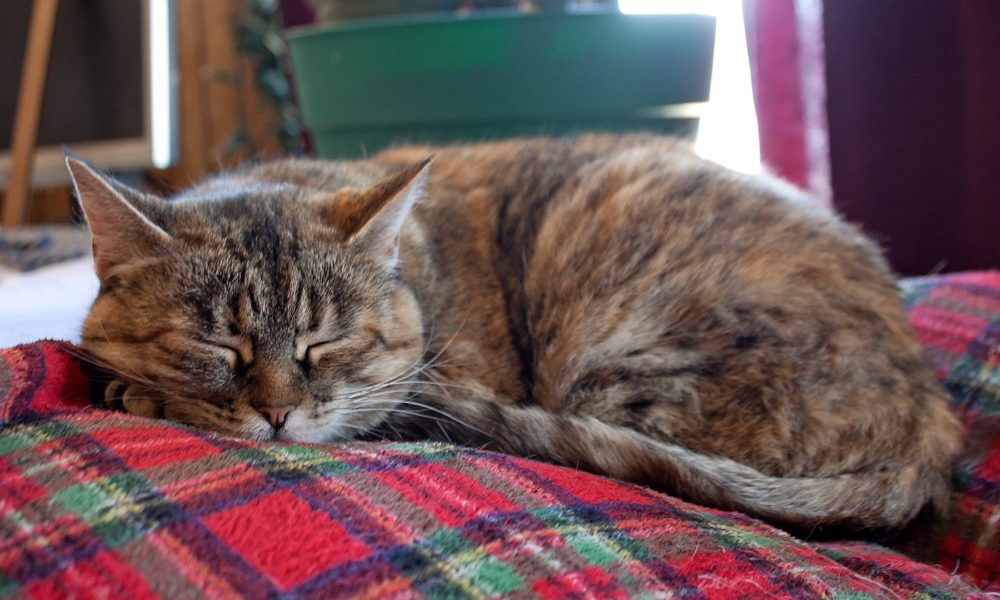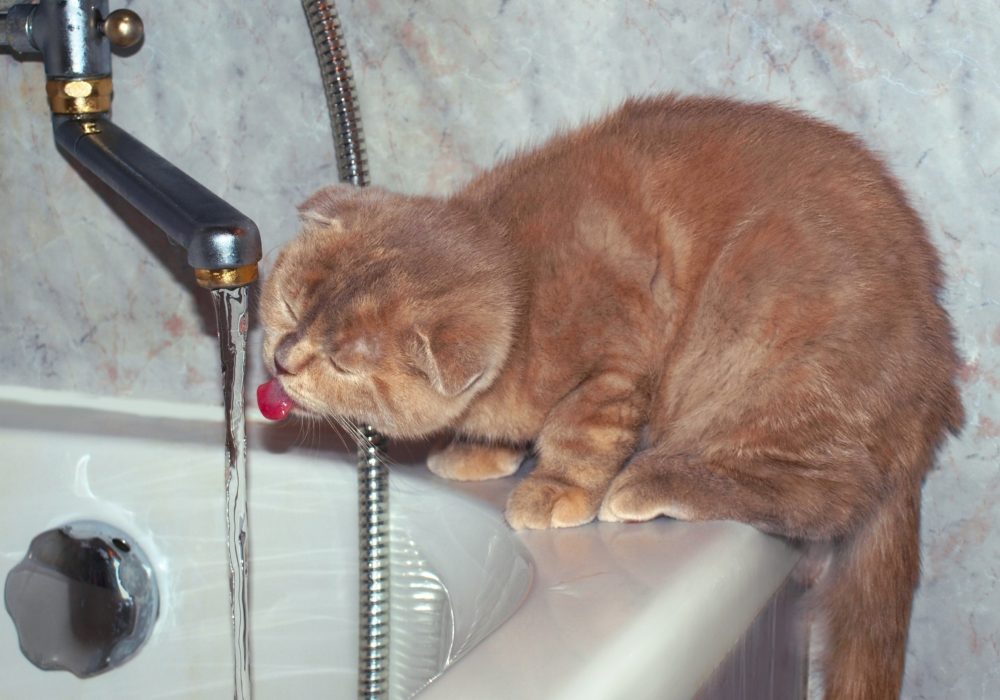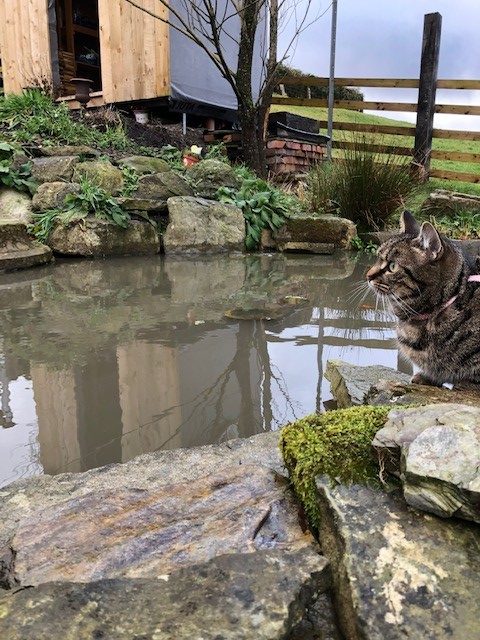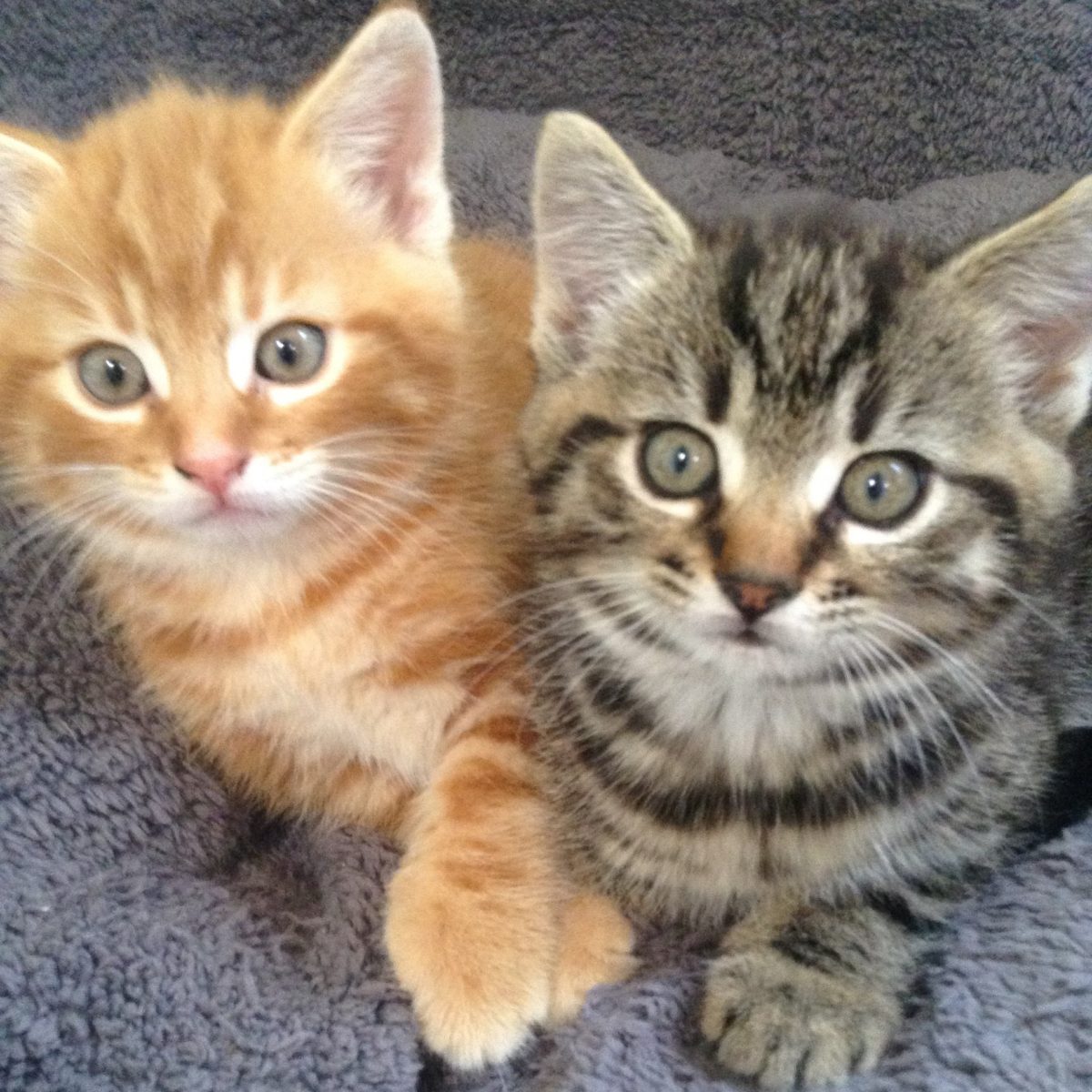
Should I let my cat outside at night? Indoor or outdoor cat?
This subject can be contentious, for us it was an easy decision because we weren’t even planning on having a pet, let alone one that lived in the house. So when we rescued Misty we set her up in the garden room/shed, after the initial 7 weeks of getting her acclimatised to us and vice versa and making sure she was fit and healthy we gradually let her out during the day, supervised at first, but it soon became clear that it was impossible to contain her within our garden boundary. Whilst our daughter agonised at letting her out (and still does), we took this decision early on because we felt it suited our lifestyle and Misty’s personality. We seem to have found a good balance, in that Misty is let out during the day fulfilling her hunting needs and desires but is kept in overnight allowing us the knowledge that she is warm and safe. 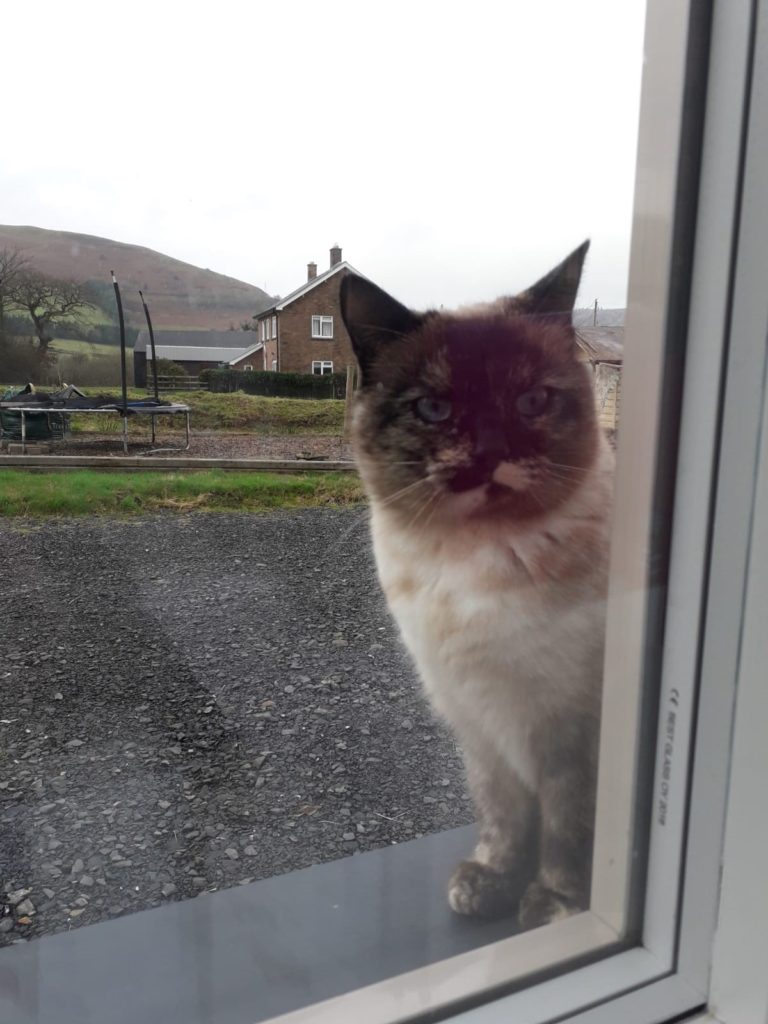
Deciding what is best for you and your cat is a decision only you can make. It is easier to opt for an indoor only cat right from the start than to convert an outdoor cat successfully into an indoor one. The benefits of keeping the cat away from possible dangers outdoors have to be weighed against the effects on the cat’s behaviour. Take your cat’s personality into account when deciding on their freedom.
What are the benefits of an outdoor cat?
Diversity of the great outdoors – Cats need to be mentally stimulated and Mother nature’s variety of different smells, sounds, sights, tastes and textures is perfect for the cat’s extraordinary senses and provides them with the mental stimulation they need.
Exercise – Active cats are much less likely to become overweight and suffer from associated health problems therefore cats with outdoor access are able to exercise more readily, either through hunting, climbing trees and fences or simply by having the extra space to explore.
Pest control – Cats are excellent at keeping unwanted rodents at bay whilst providing stimulation for the cat and allowing them to act on their natural instincts. Endorphins are released when the cat is hunting thus resulting in a happy satisfied cat.
Behavioral instincts – Spraying, scratching and such are natural behavior traits for cats, some of which aren’t ‘acceptable’ for indoors. Outdoor access enables the cats to express these natural behaviours in the great outdoors with no damage or upset to owners or their homes.
Time out – As with humans, sometimes cats just need some ‘time out’, some personal space or quiet time and the ability to escape from anything that they perceive as stressful, or a threat. A cat flap, provides an escape route with unrestricted access to the outdoors. Magnetic or microchip cat flaps can help to provide your cat with security so that other cats cannot enter your home.
Risks for an outdoor cat?
Outdoor poisons – Cats can potentially come into contact with garden chemicals, rodent control poisons, slug pellets or eating poisoned prey. There are also several garden plants that can be harmful or toxic to cats. Seek veterinary advice urgently if you suspect your cat may have ingested poison.
Parasites – Your cat can easily pick up parasites such as fleas, ticks and a variety of internal worms. Speak to your vet to find out how to prevent and treat such parasites.
Disease – Cats can contract infectious diseases from the outdoors or by contact or fighting with other cats. Speak to your vet about vaccinations and how they can protect your cat against many of these diseases.
Injuries – Injuries to cats can happen by contact with other cats, dogs and humans. Cats will fight with each other but this can be be reduced by neutering.
Sadly, many cats are injured or killed on the road each year. Quite often these are young cats and it has been shown that more road traffic injuries happen at night.
Missing / Lost – Cats can go missing for many reasons including getting trapped or locked n somewhere such as a garage or shed, moving to a new house or getting lost. Cats are sometimes fed by people mistaking them for strays, or are handed in to animal charities. Micro chipping your cat is important, please ask your vet for details of this. This can help to reunite you with your cat in the event that they ever goes missing or to be recognised if they are killed and someone hands them in to the local vet. If you move house or have a new cat it is important that the cat has fully settled in their new home before letting them out for the first time.
Outdoor checklist
- Close shed and garage doors to prevent access to sharp tools or chemicals
- Place bird feeders out of reach
- Keep your cat indoors if you have fireworks or a bonfire
- Cover fishponds with netting to stop kittens falling in or to prevent older cats poaching the fish. Empty out paddling pools when not in use
- Keep rodent bait out of reach and dispose of any poisoned animals to prevent tour at eating it
- Cover your child’ sandpit to prevent use as a litter tray
- Place bird feeders out of reach
- Get your cat neutered
- Ensure vaccinations are up to date
- Consider enclosing your garden to provide a safe area for your cat to enjoy some fresh air if you are concerned about allowing your cat free access to the outside environment.
If you decide on letting your cat outside then you’ll need to consider how to manage this and making sure your cat is safe, you may decide on having a cat flap so your cat can come and go freely, but be aware that other cats can also use the cat flap so you may want to consider a cat flap that has a sensor on it so that only allows your cat to enter. Some cat flaps can also be locked at night to keep your cat from roaming during the night.
What are the benefits of an indoor cat?
Protection – By keeping your cats solely indoors they will be protected from loss or outdoor dangers such as road traffic, other animals and outdoor poisons.
No hunting – If kept indoors, your cat won’t be hunting thus ensuring the garden birds can feed in safety and no danger from ingesting a poisoned animal. It is recommended that play can reflect hunting behaviour.
Decreased risk of disease – Your cat will not have direct contact with other cats and animals therefore less likely to contract an infectious disease or to contract parasites.
Risks for an indoor cat?
Frustration / Behavioral issues – If a cat is not allowed to express their natural instincts they may suffer from frustration, which can lead to behavioral issues. Problems include aggression, depression, house soiling, scratching of furniture, spraying and so forth.
Unable to hunt – Hunting is a great mental stimulant for cats and being solely indoors means they cannot hunt. This is more so if a cat was once an outdoor cat and had access to the outdoors for hunting but then becomes an indoor cat.
Fears and sensitivity – Some indoor cats develop a fear of change and becoming increasingly sensitive at the smallest of changes in their environment.
Over dependency – An indoor cat can become over dependent on its owner for all its needs – companionship, exercise and stimulation.
No time out – As with humans, sometimes cats just need some ‘time out’, some personal space or quiet time and the ability to escape from anything that they perceive as stressful, or a threat and cats in a restricted territory may not be able to escape these stresses.
Indoor hazards – There are also many hazards indoors including certain houseplants and flowers which are toxic to cats, certain household items can be poisonous to cats, open windows and balconies, open doors on washing machines, tumble driers etc.
Inactivity – Indoor cats still need exercise to remain healthy and reduce the risk of becoming overweight
Indoor checklist
- Protect open fires with a guard
- Ensure your cat cannot jump out of upper floor windows
- Do not place toxic houseplants where your cat can access them
- Keep your cat away from wet paint or surfaces wet with cleaning chemicals
- Never leave heated kitchen appliances unattended
- Do not heave sharp utensils and breakables within your cat’s reach.
- Keep doors of cupboards and appliances such as the washing machine shut
Whether cats go outside or not, they should be provided with a safe and stimulating indoor environment. If your cat is solely indoors then this is particularly essential.
If you decide on keeping your cat indoors then you need to consider how to keep your cat’s mental and physical wellbeing strong. This is especially important if you work during the day, you’ll need to make sure your cat has plenty to keep him/her amused. There are some great products available to suit most budgets, see our favorite items in the Recommended products section.
Indoor and Outdoor Cat option?
After weighing up the pros and cons of both indoor and outdoor options we decided upon a mixture for our cats. Misty is let out in the morning after her breakfast and is kept in overnight. It has become a routine, most days Misty is ready to come in early evening but if not, calling her name and shaking the treat bag usually results in her leaping home and being tucked in safe and sound for the evening. Boo, is an indoor cat with access to the outside via her catio. Check out our article on how to build your own catio and what to include to make it a safe, fun, stimulating haven for your cats.

Other articles you may find of interest:
How to keep your cat happy – 10 key factors
